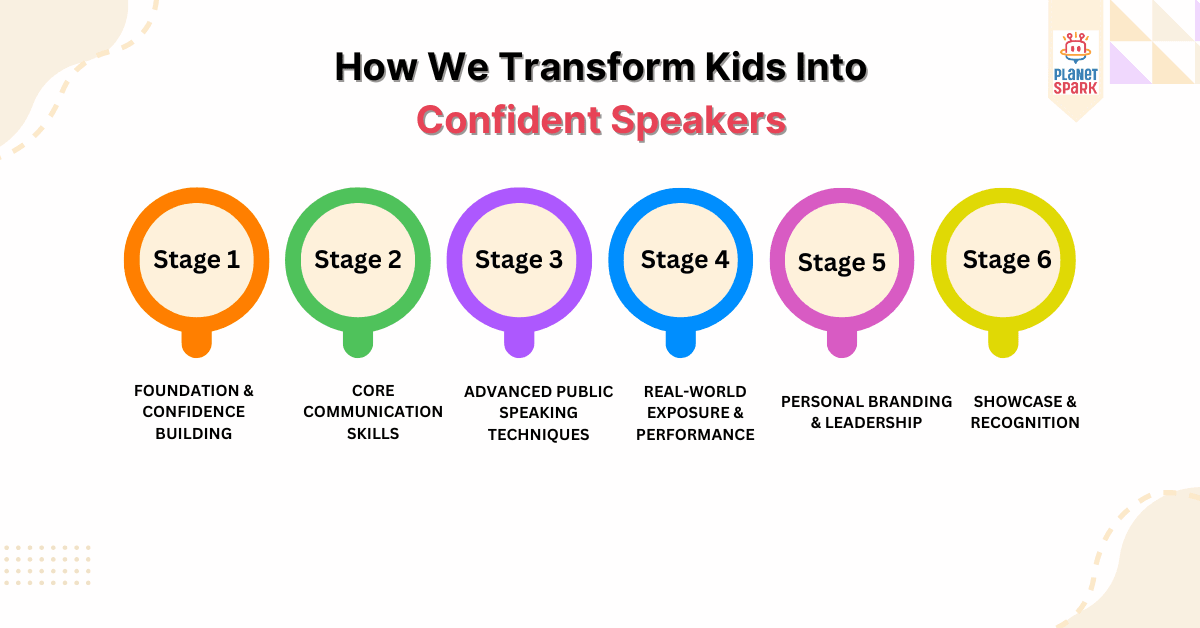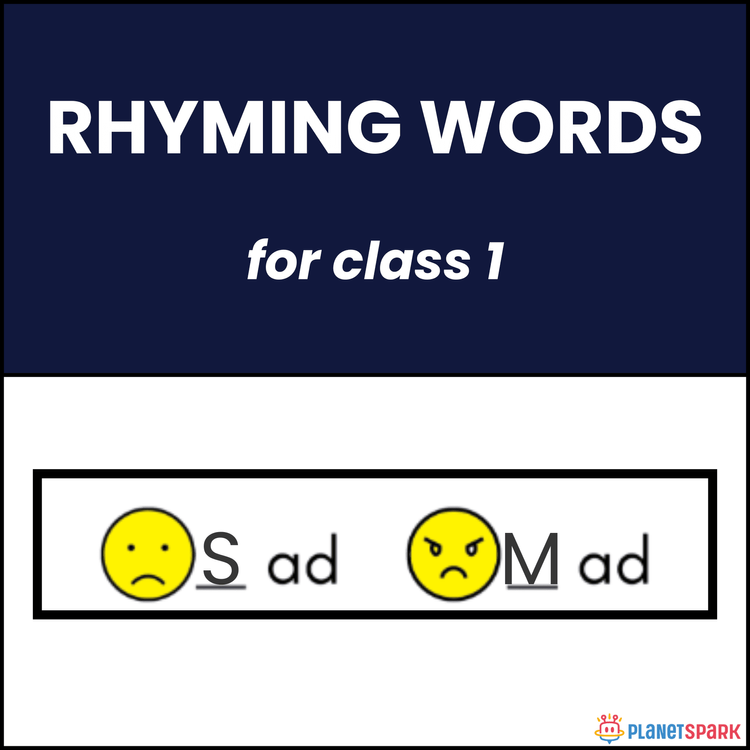English Speaking Activities: Effective Ways to Improve Fluency

Table of Contents
- Introduction
- Why English Speaking Activities Matter
- Fun English Speaking Activities for All Learners
- Classroom Speaking Activities for Students
- Online English Speaking Activities
- Interactive Speaking Games
- Group Speaking Activities for Confidence
- Advanced Speaking Activities
- Tips to Make Speaking Activities Effective
- Why Choose PlanetSpark for Public Speaking?
Introduction
The ability to speak English fluently has become an essential life skill in today’s world. It opens doors to better education, career opportunities, and global communication. However, for many learners, speaking confidently in English feels challenging. That’s why English-speaking activities are highly searched by students, teachers, and parents alike; they provide practical ways to practice, gain fluency, and build confidence without relying solely on grammar exercises or memorization.
If you’ve ever wondered how to make English practice fun, interactive, and effective, the answer lies in structured speaking activities in English. These include role-plays, storytelling, debates, online speaking tasks, and group activities that allow learners to use the language in real situations.
In this blog, we’ll explore a wide range of English-speaking activities for all levels, including:
Fun and interactive speaking games that make practice enjoyable.
Classroom speaking activities and group discussions for students.
Online English speaking activities for learners at home.
Creative methods like drama, role-play, and storytelling.
Advanced activities for improving presentation and public speaking skills.
Tips to make these activities more effective.
How PlanetSpark’s Public Speaking Courses use these methods to transform children into confident communicators.
By the end, you’ll have a complete toolkit of 30+ speaking activities, designed to build fluency, confidence, and communication skills in English.

Why English Speaking Activities Matter
Boosting Confidence and Overcoming Fear
The biggest barrier to speaking English is hesitation. Learners often feel nervous about making mistakes, mispronouncing words, or using incorrect grammar. This fear often keeps them silent, preventing them from practicing at all. But the truth is, fluency only develops when students try, even if mistakes happen.
Fun English-speaking activities create a safe, encouraging environment where students can speak freely without judgment. When learners play a role-play game, act in a skit, or participate in a group activity, their focus shifts from “being correct” to “communicating meaning.” This shift reduces anxiety and builds self-assurance.
For example, in activities like Two Truths and a Lie or Speed Conversations, learners are pushed to think quickly, laugh at mistakes, and try again. Over time, they realize mistakes are simply stepping stones toward improvement.
Building Vocabulary and Fluency
Grammar books teach sentence rules, but they can’t prepare students for real-time conversations. English conversation activities bridge this gap by forcing learners to think on their feet, recall vocabulary instantly, and structure sentences quickly.
For instance, in activities like Describe and Guess, a learner must use adjectives and descriptive phrases naturally, which strengthens vocabulary usage. Similarly, role-playing everyday scenarios like shopping or asking for directions helps learners pick up practical vocabulary that sticks longer than memorized lists.
Fluency is also about rhythm and flow. Activities such as storytelling circles or speed conversations mimic real conversations where learners cannot pause indefinitely. They have to respond promptly, which improves thinking speed and natural flow.
Encouraging Creativity and Expression
Speaking English is not only about grammatical correctness, it’s about communication, storytelling, and sharing ideas. When learners are given the freedom to express themselves creatively, they discover the joy of language beyond textbooks.
Storytelling, debates, and speaking games are powerful tools for encouraging creativity. In a storytelling activity, for example, a student might invent characters, weave plots, and narrate emotions. This not only enhances vocabulary but also allows them to experiment with tone, pace, and expression.
Debates, on the other hand, sharpen critical thinking. Learners must craft logical arguments, counter opponents, and use persuasive language. These skills go beyond English—they’re life skills that foster leadership and confidence.
Developing Social and Presentation Skills
Language is deeply social; it’s not just about individual fluency but also about how learners interact with others. Group speaking activities such as panel discussions, collaborative storytelling, and mock press conferences help students build teamwork, listening, and leadership skills.
When working in groups, learners practice turn-taking, respecting opinions, and actively listening. For instance, in a debate club, students must not only present arguments but also respond respectfully to opposing views. This builds emotional intelligence along with language skills.
Presentation skills are another major outcome. Activities like show and tell, mini-presentations, and public speaking practice teach students to structure thoughts clearly, use body language effectively, and engage an audience. These are crucial skills for both academic and professional success.
Fun English Speaking Activities for All Learners
1. Role-Playing Everyday Situations
Role-playing is one of the most powerful ways to practice speaking English because it mirrors real-life situations. Students take on characters and act out scenarios like ordering food at a restaurant, checking into a hotel, attending a job interview, or even traveling abroad. These activities for students in English allow them to practice functional vocabulary and polite expressions that they will actually use in daily life.
For example, a student playing the role of a customer can practice phrases such as “Could I see the menu, please?” while the student acting as the waiter responds in kind. Similarly, a mock job interview prepares learners for professional contexts where confidence and clarity matter most.
2. Storytelling Circles
Storytelling circles are an exciting way to boost imagination, teamwork, and fluency. The activity starts with one student creating the opening line of a story, such as “Once upon a time, a boy found a magical key…” Each student then adds one line to continue the narrative.
This activity encourages learners to think on their feet and expand their vocabulary. Since the story develops unpredictably, students must listen carefully and respond creatively. Beyond building fluency, this also helps them practice linking sentences, using connectors, and maintaining narrative flow.
3. “Two Truths and a Lie”
This classic speaking game is simple yet highly effective for building fluency, creativity, and social connection. Each learner says three statements about themselves: two true facts and one false statement. The rest of the group listens carefully and guesses which one is the lie.
For example, a student might say:
I have a pet rabbit.
I can swim very fast.
I visited five countries last year.
4. Describe and Guess
This activity develops descriptive language, listening skills, and creativity. One student is given an object, picture, or scenario and must describe it without saying its name. The others in the group then try to guess what it is.
For example, if the word is “elephant,” the student might say: “It is very large, grey in color, has a long trunk, and big ears.” Others then guess: “Elephant!”
5. Telephone Game with Sentences
The telephone game, also known as “Chinese Whispers,” is a fun and interactive activity that builds both listening and speaking clarity. The teacher whispers a sentence to the first student in a line. That student then whispers it to the next, and so on, until it reaches the last student. The last student says the sentence aloud, which often ends up humorously different from the original.
For example, the teacher might whisper: “The cat jumped over the tall fence to chase a butterfly.” By the time it reaches the last student, it might become: “The cat jumped on the fence to eat a sandwich.”

Classroom Speaking Activities for Students
1. Group Discussions
Small groups are given a topic such as “Should homework be banned?” or “The importance of technology in education.” Students then share their ideas, counterpoints, and examples. These classroom speaking activities are powerful because they not only build fluency but also encourage teamwork and listening skills. Learners are exposed to diverse perspectives, which fosters respect and empathy. Over time, group discussions train students to think critically, organize thoughts, and respond politely in real conversations.
2. Show and Tell
Students bring an item such as a toy, a book, or even a photograph and talk about it for a minute or two. This activity is perfect for beginners as it allows them to start with something familiar. Show and Tell helps build descriptive vocabulary, confidence in speaking before peers, and presentation skills. It also creates a fun, interactive classroom environment, as other students get curious and ask questions. Over time, learners gain comfort in expressing themselves publicly, which lays the foundation for advanced speaking tasks.
3. Peer Interviews
In this activity, students pair up and prepare a few questions to interview each other, such as “What’s your favorite subject?” or “What do you want to be when you grow up?” After the interview, each student introduces their partner to the class. Peer interviews develop both questioning and speaking skills while encouraging active listening. This English-speaking activity also breaks classroom monotony, helps shy students open up, and creates stronger bonds among classmates.
4. Mini Presentations
Each student selects a short topic like “My Favorite Book,” “A Memorable Holiday,” or “Why Sports Matter” and presents it to the class. These English-speaking activities are highly effective in building stage confidence, fluency, and clarity of expression. Presentations also train learners to organize content with an introduction, main points, and conclusion, an essential academic skill. As they progress, teachers can introduce visual aids like charts or slides, which prepare students for future formal presentations.
5. Debate Competitions
Debates are an excellent way to teach students logical thinking, persuasive speaking, and teamwork. In this activity, students are divided into two teams, each arguing for or against a topic like “Technology makes life easier” or “School uniforms should be optional.” Debates encourage learners to think quickly, respond to counterarguments, and use strong vocabulary. Beyond language skills, debates also build leadership qualities and the confidence to stand firm on one’s ideas.
Turn hesitation into fluency
Enroll in our Public Speaking Course now!
Online English Speaking Activities
1. Virtual Role-Plays
Learners practice scenarios over video calls, such as ordering online or attending a meeting. These online English speaking activities simulate real-life communication.
2. Podcasting Practice
Students record their thoughts on a topic and share the audio. This helps improve pronunciation and fluency.
3. Online Story Circles
Through group calls, students co-create a story, each adding one line. This activity makes online learning interactive.
4. Language Exchange Programs
Students are paired with peers worldwide to practice conversational English. This provides cultural exposure and real communication.
5. Digital Presentations
Learners create and present slides online, developing both technical and communication skills.
Boost your child’s communication skills with fun, engaging English speaking activities
Interactive Speaking Games
1. Vocabulary Bingo
Bingo cards with words instead of numbers are distributed. Students must form sentences with the words before marking them.
2. Speed Conversations
Learners rotate partners every two minutes to discuss a topic. These fast-paced English conversation activities reduce hesitation.
3. Word Association
One student says a word, and the next replies with a related word. This improves vocabulary recall.
4. Charades with English Phrases
Students act out phrases, and others guess. This fun English-speaking activity combines entertainment with learning.
5. Board Games with English Prompts
Games like “Snakes and Ladders” are modified with speaking tasks, e.g., answering a question when landing on a square.
Group Speaking Activities for Confidence
1. Panel Discussions
Students act as panelists on a topic, practicing formal communication and stage presence.
2. Skits and Drama
Short plays in English allow students to practice pronunciation, tone, and teamwork.
3. Collaborative Story Writing
Groups write a story together and then present it orally. This builds creativity and cooperation.
4. Problem-Solving in English
Groups are given challenges (e.g., planning an event) and must solve them through discussion.
5. Mock Press Conferences
One student plays a celebrity while others ask questions. This fun activity encourages quick responses.
Give your child the edge in English fluency and public speaking
Join PlanetSpark today!
Advanced Speaking Activities
1. Extempore Speeches
Students are given random topics and must speak instantly. This boosts confidence and spontaneity.
2. Persuasive Speaking
Learners prepare speeches to convince others of an idea. This builds public speaking and critical thinking.
3. Story Retelling
Students listen to a story and retell it in their own words, improving comprehension and fluency.
4. Impromptu Debates
Quick debates with limited prep time sharpen thinking and speaking under pressure.
5. Speech Competitions
Formal events where students deliver speeches improve stage presence and articulation.
From storytelling to debates, let your child explore the joy of speaking
Tips to Make Speaking Activities Effective
Keep activities age-appropriate.
Focus on fluency first, accuracy later.
Encourage creativity and risk-taking.
Provide positive feedback and suggestions.
Mix fun speaking games with structured exercises.
Use real-life contexts for practice.
English speaking is more than just a subject; it’s a life skill. Through engaging English-speaking activities from classroom games to online role-plays, students learn to express themselves with confidence and fluency. These activities make learning fun, boost vocabulary, and prepare learners for real-world conversations.
Teachers, parents, and students can use the activities shared here to turn English learning into an exciting, interactive journey.
Why Choose PlanetSpark for Public Speaking?
PlanetSpark takes English speaking beyond activities by offering structured, impactful programs. Children gain confidence through:
1:1 Live Classes with certified trainers
AI-powered feedback on fluency, grammar, and clarity
Debate, storytelling, and podcasting clubs
Interactive speaking games for kids
Gamified learning for engagement
Regular parent-teacher updates and reports
Transform your child into a confident communicator
Frequently Asked Questions
They are interactive exercises like debates, role-plays, and speaking games designed to improve fluency, confidence, and communication in English.
Students can practice through storytelling, recording speeches, online role-plays, and group video calls with peers.
Games like “Two Truths and a Lie,” storytelling circles, charades, and vocabulary bingo are fun and effective for children.
Yes. Activities like show-and-tell, peer interviews, and picture description are perfect for beginners to gain confidence.
They involve virtual role-plays, group calls, podcasting, and language exchange sessions conducted online for flexible learning.
These include debates, panel discussions, drama, and collaborative storytelling where multiple students practice together.
Download Free Worksheets
Personalized Communication Report
Record a video to get a AI generated personalized communication report for your child

Hi There, want to try these
tips for your child with
LIVE with our expert coach?
Let's check your child's
English fluency

